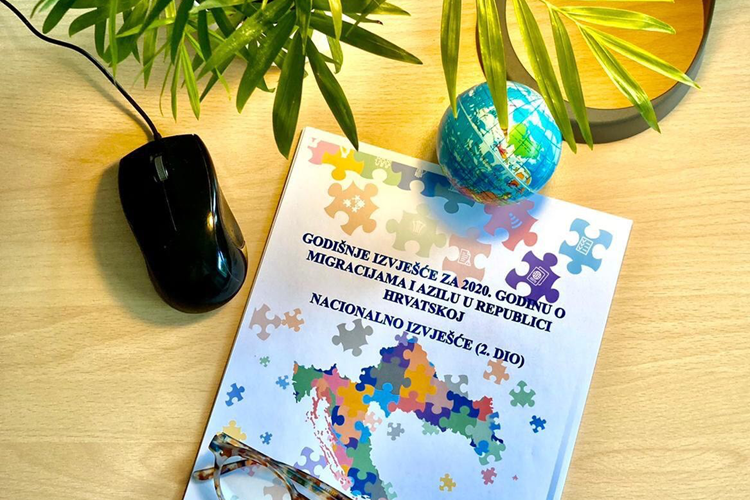- Published: 16.06.2021.
The Annual Report on Migration and Asylum for the Republic of Croatia for 2020 and the EMN Annual Report for 2020 have been published
The Annual Report for the Republic of Croatia provides an overview of the most significant news in various migration areas during 2020 and an overview of the impact of COVID-19 on all thematic areas. The report also shows the selected statistics
The National Contact Point for the European Migration Network in the Republic of Croatia (EMN NCP HR) has prepared the sixth annual report on migration and asylum, which covers the period from 1 January to 31 December 2020. The report presents the context of the development of asylum and migration policy in 2020 with an emphasis on Croatia's presidency of the EU Council in the first half of the year, and provides an overview of news through the following migration thematic areas: legal migration, international protection, unaccompanied minors and other vulnerable groups, integration, citizenship and statelessness, borders, visas and Schengen, irregular migration and migrant smuggling, trafficking in human beings and return and readmission.Some of the most significant news in 2020 include measures adopted in response to the COVID-19 pandemic. In 2020, the Civil Protection Headquarters of the Republic of Croatia made several decisions on a temporary ban on crossing the border crossings of the Republic of Croatia. In addition, the receipt of applications for the issuance of Croatian short-stay visas in diplomatic missions and consular offices has been temporarily suspended since March 2020. The COVID-19 pandemic also affected the change in working conditions and the adjustment of work in accordance with the public health recommendations.
Other news includes legislative changes in the area of legal migration and citizenship, in particular the enactment of the new Foreigners Act, which entered into force on 1 January 2021. During 2020, various projects in the field of integration were implemented, human capacity building activities and procurement of technical equipment for border control continued.
Under the influence of the COVID-19 pandemic, in 2020, compared to 2019, the total number of first issued residence permits decreased, the number of asylum seekers did not change significantly, and an increase in illegal state border crossings was observed.
The report was presented at the 10th meeting of the national migration network organized by EMN NCP HR on 10 June 2021.
In addition, the European Migration Network published the Annual Report on Migration and Asylum 2020, which explores trends in migration and asylum across the EU and Norway. It showed that during 2020, COVID-19 related travel restrictions resulted in a significant decrease in the numbers of third-country nationals entering the EU, either as legal migrants or as asylum seekers, and those leaving the EU in the framework of return procedures. Furthermore, electronic systems and digital tools played a key role in maintaining the functioning of migration and asylum systems. Increasing the efficiency for better migration management was a common theme at EU and national level. The European Commission’s new Pact on Migration and Asylum laid out a comprehensive approach in the areas of migration, asylum, integration and border management. Member States adopted new strategic directions and priorities, as well, focusing on the attraction of new talent and labour market integration.
An information leaflet about the report can be found here, and a brief overview of the report (one page) here.
